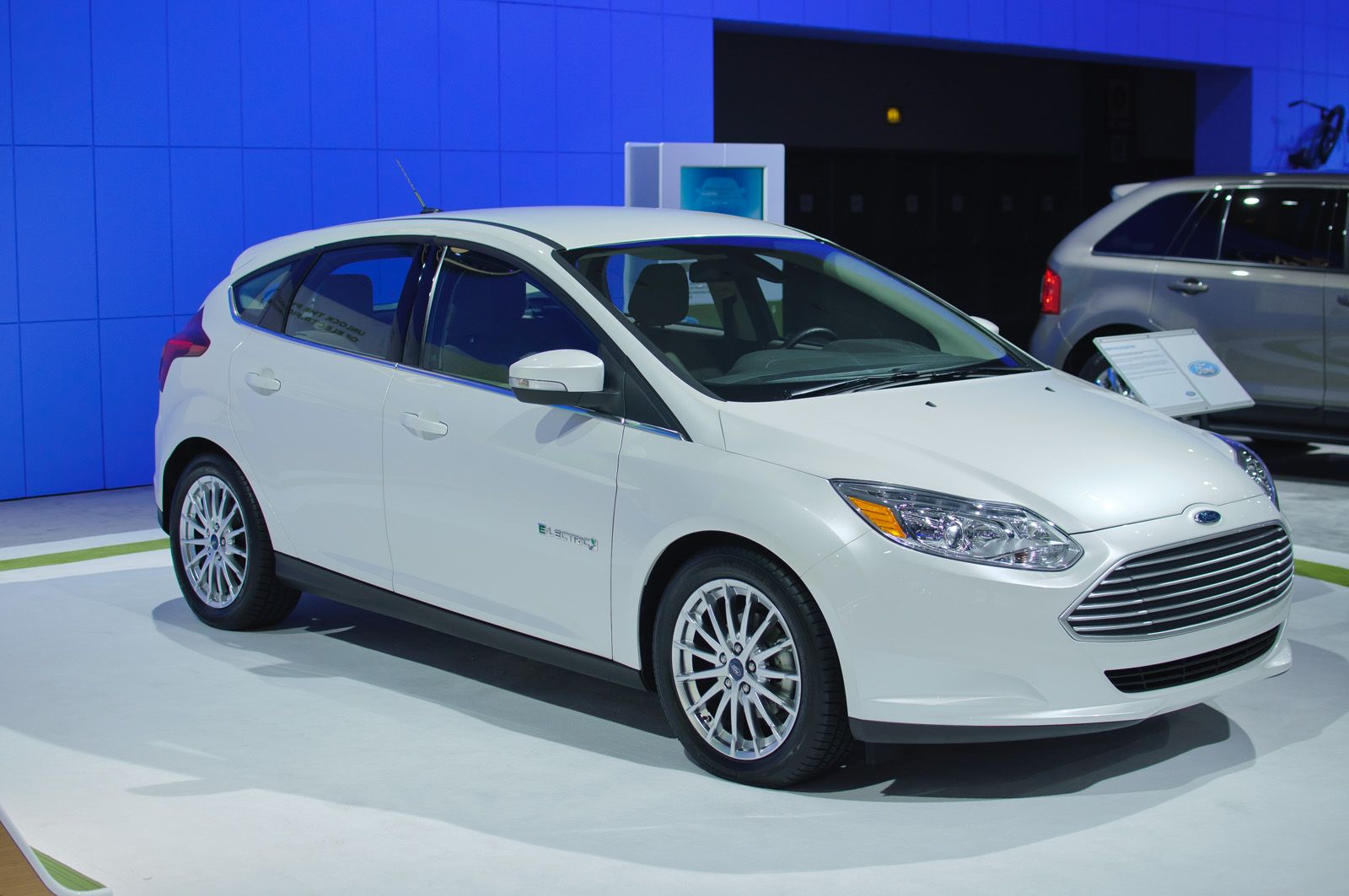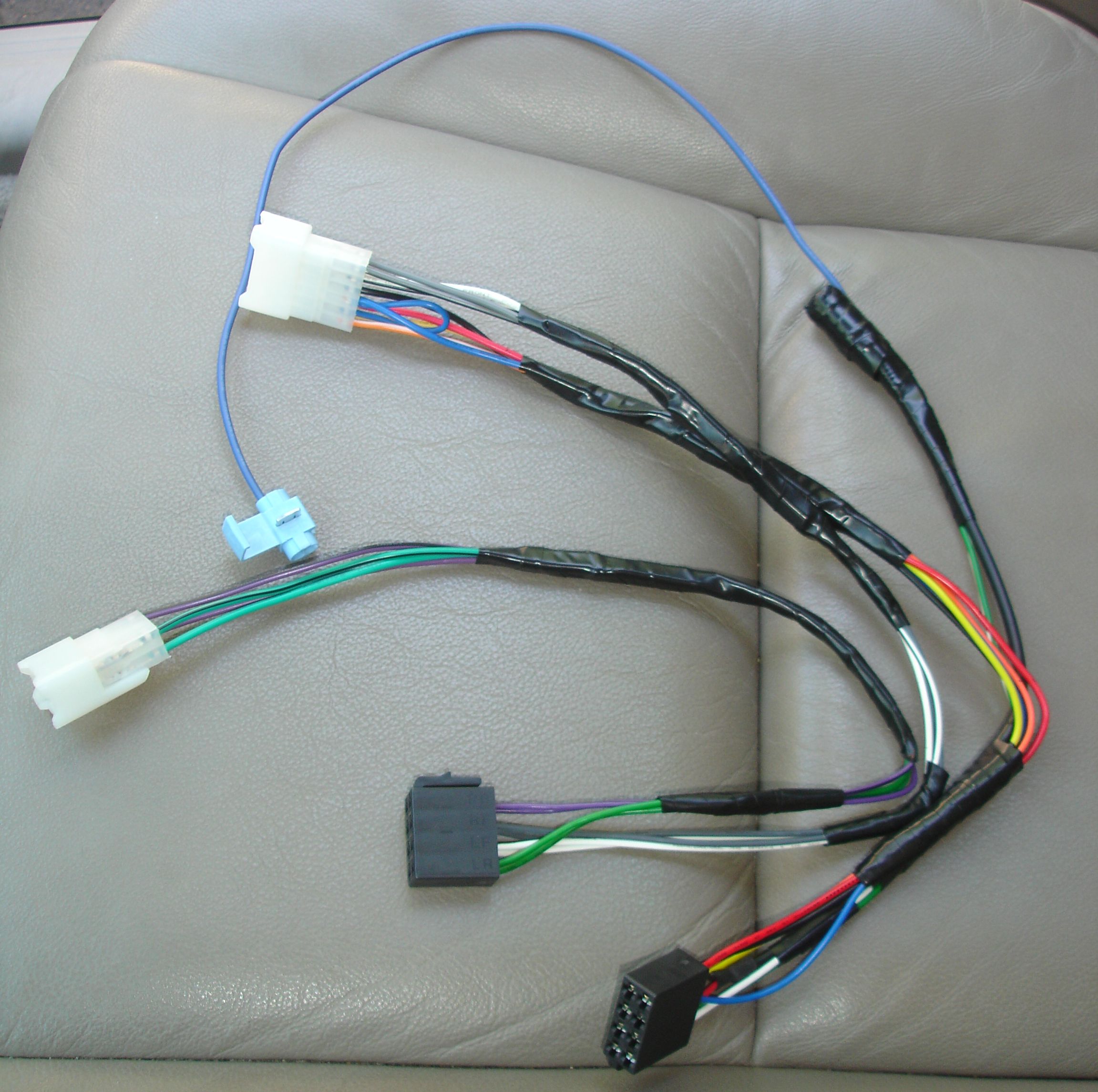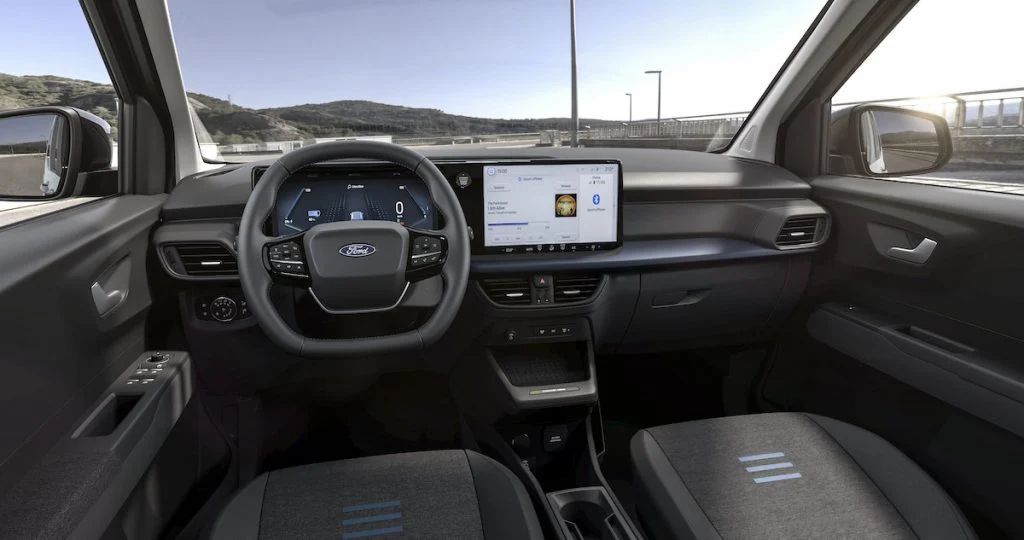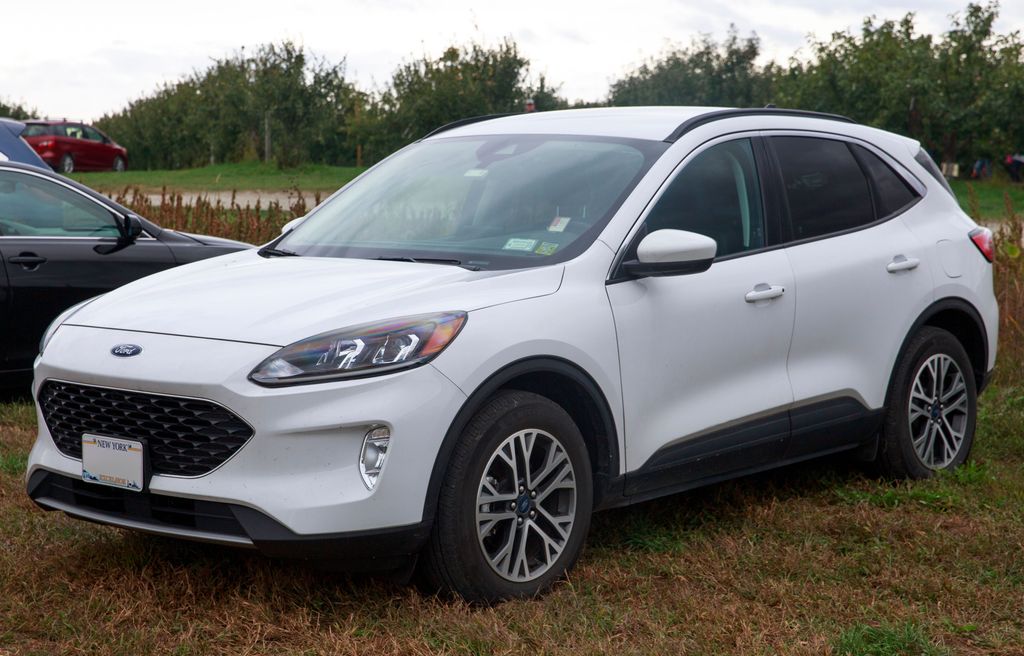
Get ready for a seismic shift in the automotive world, because Ford is making a monumental move that could redefine the electric vehicle landscape as we know it. The Blue Oval has just unveiled its ambitious plan to launch a family of affordable electric vehicles, spearheaded by a midsize four-door electric pickup truck that promises to start at a jaw-dropping price point of around $30,000. This isn’t merely another new vehicle; it’s a strategic pivot, a calculated risk, and what Ford CEO Jim Farley boldly terms a “Model T moment” for the company and for the industry at large.
This revolutionary approach is underpinned by Ford’s brand-new Universal EV Platform, a meticulously engineered foundation designed to strip away complexity and dramatically lower production costs. The first vehicle to emerge from this innovative platform, the midsize electric pickup, is slated to begin assembly at Ford’s Louisville Assembly Plant. With deliveries anticipated to kick off in 2027, the company is not just aiming for affordability, but also for a vehicle that truly delights customers in every conceivable way.
Jim Farley articulated this vision with profound clarity during the announcement in Kentucky. He stated, “We took a radical approach to a very hard challenge: Create affordable electric vehicles that delight customers in every way that matters – design, innovation, flexibility, space, driving pleasure, and cost of ownership.” Farley emphasized that Ford is moving past what he described as the “good college tries” from other Detroit automakers, promising that this new platform is poised to fundamentally change the game by optimizing efficiency and slashing costs.
This isn’t just about a lower sticker price; Ford is making audacious claims about the value proposition of its new electric pickup. The company promises a lower cost of ownership over five years than a three-year-old used Tesla Model Y, a significant draw for budget-conscious consumers looking at the long-term financial implications of EV ownership. Beyond the economic benefits, the new truck also boasts impressive practicality, engineered to offer more passenger space than the latest Toyota RAV4, a popular compact SUV known for its interior roominess.

Imagine the utility: a spacious cabin coupled with the added cargo flexibility of both a frunk – the front trunk, a signature EV perk – and a traditional truck bed. This blend of passenger comfort and versatile storage positions Ford’s new offering as more than just a utility vehicle; it’s designed to be a true everyday companion. Doug Field, Ford’s Chief EV, digital, and design officer, even revealed that the company drew inspiration from the iconic Model T, aiming for a vehicle that transcends mere transportation.
But the innovations don’t stop at space and cost savings. Ford is also targeting an exhilarating driving experience. The company promises that the new electric pickup will be fun to drive, with a targeted 0 to 60 mph time as fast as the Mustang EcoBoost. For context, the Mustang EcoBoost has been tested at a brisk 4.5 seconds to 60 mph. Furthermore, Ford is aiming for even more downforce, which translates to better handling and stability, ensuring that this affordable EV doesn’t compromise on performance thrills.
Central to achieving these ambitious goals is Ford’s radical new Universal EV Platform and the accompanying Universal EV production system. This innovative approach to manufacturing departs significantly from traditional assembly lines. Instead of a single, long conveyor system, Ford is implementing an “assembly tree” concept, where three distinct sub-assemblies operate simultaneously before merging later in the production process.
This streamlined system translates directly into remarkable efficiencies. Ford claims that the new platform reduces parts by an impressive 20% compared to the average vehicle, and it features 25% fewer fasteners. The new production system also requires 40% fewer workstations dock-to-dock in the plant, and boasts a 15% faster assembly time. These reductions in complexity and assembly time are crucial levers for lowering manufacturing costs and accelerating production volumes.
Product on Amazon: Ford F-150 Lightning EV Front License Plate Mount – Removable, Height-Adjustable, Lockable Front License Plate Mount – USA Made SnapPlate® – No Drill, No Adhesives (Fits 2022-2025 F-150 Lightning EV)
Brand: SnapPlate
Binding: Tools & Home Improvement Product Group: Automotive Parts and Accessories
Price: 119.97 USD
Color: Black
Vehicle Service Type: Car
Item Weight: 0.74 Kilograms
Finish Type: 3D Printed + Stainless Steel Hardware
Features:
1. Fits all years of Ford F-150 Lightning EV only with USA/CAN/MEX license plates (see our other listings for other models)
2. Clean, minimal design blends perfectly with the F-150 Lightning front end
3. Installs and removes in seconds with nothing left behind
4. 3rd gen, height-adjustable license plate mount with five height positions
5. Paint-safe, radiator-safe, and parking sensor-safe (remove for touch car washes!)
Top Review from US: “My third snap plate for my third different car and I will _never_ use an oem plate holder!Super easy to install, super easy to remove if that suits you as well!Custom fit to the car, doesn’t budge.
Shopping on Amazon >>
Read more about: The Fall of Aftermarket Stereos: How Factory Car Audio Got So Good

A tangible example of this efficiency is the wiring harness in the new midsize truck. It will be an astonishing 4,000 feet shorter and 10 kilograms (approximately 22 pounds) lighter than the unit used in the Mustang Mach-E. This seemingly small detail represents a massive reduction in material, complexity, and weight, all contributing to the overarching goal of cost efficiency and improved vehicle performance. Ford’s meticulous re-evaluation of every component and process is truly paying dividends.
Another pivotal element in Ford’s cost-cutting strategy is the widespread adoption of lithium-iron-phosphate (LFP) batteries. Ford proudly states it is the first automaker to build prismatic LFP batteries in the US, leveraging technology from Chinese EV-battery maker CATL. This strategic move not only significantly reduces battery costs – with LFP chemistry being around 30% cheaper than traditional lithium-ion units – but also frees up valuable interior space.
The LFP batteries lie flat under the floor of the vehicle, which offers multiple benefits. This design improves handling by lowering the center of gravity, contributes to a quieter ride, and, as Ford describes, “provides a surprising amount of interior space.” While the battery capacity for the new truck is expected to be between 49 kWh and 60.48 kWh, which is smaller than some modern packs, Ford plans to boost range through improved aerodynamic designs and software optimization, as explained by Alan Clarke, head of the skunkworks team.
Product on Amazon: Universal 21 Circuit Wiring Harness Kit, Universal Extra Long Wire 21 Circuit Wiring Harness Standard Color 17 Fuses for GM Chevy Chrysler Dodge Ford Hotrods Plymouth Mopar Mercury Ratrods
Brand: Saree
Binding: Misc. Product Group: Automotive Parts and Accessories
Price: 76.99 USD
Item Weight: 2 Grams
Cable Type: proprietary
Connector Type: Circular (Automotive)
Top Review from US: “The harness and everything looks really well made, especially for the price. The instructions included seem pretty fair with one big exception, they are missing a section that they say is there and needs done!!
Shopping on Amazon >>

This groundbreaking initiative emerges at a critical juncture for Ford’s EV business. The company has faced substantial losses in its EV and software division, estimated at up to $5.5 billion, and nearly $10 billion combined from 2023 to 2024. In 2023 alone, Ford’s Model e EV unit lost $5.1 billion, averaging a loss of approximately $48,500 per EV sold. These numbers underscore the urgent need for a more profitable EV strategy, and Farley is confident that this new family of EVs will achieve profitability within one year of their rollout.
The broader EV market in the US is also at a fraught stage. Average EV prices stood at around $47,000 in June, according to J.D. Power data, making affordability a top concern for shoppers. Meanwhile, Chinese models, such as the BYD Seagull, are disrupting global markets with price points ranging from $10,000 to $25,000. Farley candidly acknowledged the threat, calling the BYD Seagull “a bigger problem for the company than government mandates.”
The competitive landscape is heating up, with new players and established rivals all vying for a slice of the affordable EV pie. EV startup Slate, backed by Amazon CEO Jeff Bezos, is aiming for a starting price in the mid-$20,000s for its electric pickup. Tesla has teased a cheaper model, while Rivian and Lucid are also planning lower-priced models, though their price points remain in the $40,000s to $50,000s. Ford’s $30,000 target positions it aggressively in this nascent market segment.
Product on Amazon: NACS to CCS Adapter Tesla Supercharger Charging Stations for Ford EVs/GM/Rivia for V3/V4 DC 500A 1000V
Brand: Telatefe
Binding: Product Group: Automotive Parts and Accessories
Price: 59.99 USD
Connectivity Technology: Supercharger adapter, tesla supercharger adapter
Connector Type: DC Tesla Supercharger, NACS to CCS1 Charger Adapter
Color: black
Input Voltage: 1000 Volts
Amperage: 500 Amps
Number of Items: 1
Features:
1. 【High Charging Speed】– Telatefe NACS to CCS Adapter Max 500A 1000V, which provide Electric Vehicles with extremely fast charging speeds, much faster than standard chargers. Their maximum power can reach 250 kW, allowing a car to charge up to about 80% in just 31 minutes.
2. 【Charging On the Go】– Telatefe NACS to CCS Adapter Max 500A 1000V, NACS to CCS Electric Vehicle Charging Adapter come with Specialized Carry Bag. Durable and damage-Resistant. Easy to Carry, Charging On the Go.
3. 【How to know if my car can be charged at a Tesla Supercharging stalls】– 1. Download the Tesla app (version 4.30.5 or later) for iOS or Android and create a Tesla Account; 2. Select ‘Charge Your EV’ and find your Supercharger site; 3. Tap the ‘Add Your Vehicle Details’ banner and add your details.
4. 【ATTENTION】– Doesn’t work on the Tesla chargers; Not Compatible with Supercharger AC/CCS1; NOT fit for Supercharger/J1772; NOT fit for Tesla Wall Charger/Tesla Mobile Charger/Tesla Destination Charger; NOT fit for Tesla Model 3/Y/X/S/Cybertruck.
Top Review from US: “It’s work my Mercedes Benz on Tesla super charger 250kw.This adapter cannot lock nacs cable but it’s okay. Easy to take out or on.Another side cccs cable, little bit difficult to take out or on. Need some technical.”
Shopping on Amazon >>
Read more about: Donald J. Trump: A Comprehensive Profile of the 45th and 47th U.S. President, Businessman, and Media Personality

Furthermore, the US EV market faces headwinds from policy changes, including the elimination of the $7,500 consumer tax credit, loosening regulations on emissions, and reduced funding for charging infrastructure. These factors are expected to further dampen demand, making cost efficiency an even more critical differentiator. Farley believes that in this environment, automakers must “pick their lanes,” asserting that “the pure EV market in the US seems to us very clear: small vehicles used for commuting and around town.”
While crosstown rival General Motors has adopted a strategy of electrifying vehicles across its entire lineup, building a ground-up platform for a diverse range of models, Ford’s earlier approach involved reconfiguring many of its popular gasoline-powered vehicles with batteries to get to market sooner. This strategy, while allowing quicker entry, delayed the development and launch of a unified EV platform until now. However, Farley argues that being “out front has exposed Ford to more EV demand fluctuations over the past two years,” leading to valuable market insights.
The revolutionary Universal EV Platform wasn’t conceived overnight. It’s the result of more than a decade of clandestine development by Ford’s so-called “skunkworks team,” a California-based group filled with talent from EV rivals like Tesla and Rivian. This highly secretive unit, led by former Tesla executive Alan Clarke, operated so independently that Farley himself recounted a time when his badge couldn’t even grant him access to their building. This level of autonomy allowed for the radical rethinking necessary to achieve such a breakthrough.
Ford is backing this ambitious venture with significant investment. The company has invested around $5 billion into its Louisville Assembly Complex to deliver its new EV pickup and LFP batteries. More specifically, nearly $2 billion is being invested directly into the Louisville factory, which will secure 2,200 hourly jobs. While this represents 600 fewer hourly jobs than the plant currently supports, Ford has stated that affected employees will be offered buyouts or transfers to other facilities. The investment also includes expanding the Louisville facility by 52,000 square feet, and the LFP battery cells will be produced at the new BlueOval Battery Park in Michigan.
Read more about: Donald J. Trump: A Comprehensive Profile of the 45th and 47th U.S. President, Businessman, and Media Personality

This shift in production focus will, however, lead to the discontinuation of Louisville’s current products: the Ford Escape and Lincoln Corsair compact SUVs. Production of these models will conclude later this year, though Ford assures there’s enough inventory for sales to continue well into 2026. This transition underscores Ford’s unwavering commitment to its new EV future, even if it means retiring established gasoline models.
Looking beyond the initial pickup truck, the Universal EV Platform is designed to be highly scalable. Ford has indicated that it will spawn a full “family of affordable, electric, software-defined vehicles.” While specific details on future models remain under wraps, a graphic shown during the briefing depicted a vehicle transforming through various SUV, truck, and van shapes. Ford explicitly stated they are working on “everything from vans to three-row SUVs down to B-segment vehicles,” highlighting the vast potential of this modular architecture.
These vehicles will also be “software-defined,” meaning they will feature sophisticated operating systems that Ford can continuously improve through over-the-air updates, enhancing functionality and user experience over time. The initial pickup, for example, will be capable of over-the-air updates and will feature BlueCruise, Ford’s hands-free driving-assist system. This integration of advanced software alongside innovative hardware truly positions Ford at the forefront of the next generation of electric mobility.
Car Model Information: 2023 Ford Escape Active
Name: Ford Escape
Caption: 2021 Escape Hybrid (US)
Manufacturer: Ford Motor Company
Aka: Unbulleted list
Production: 2000–2025
ModelYears: 2001–2025
Class: Compact crossover SUV
BodyStyle: SUV
Layout: Unbulleted list
Predecessor: Nissan Terrano II
Successor: Ford Territory (China)
Categories: 2010s cars, 2020s cars, All-wheel-drive vehicles, All Wikipedia articles written in American English, All articles with dead external links
Summary: The Ford Escape is a compact crossover SUV manufactured and marketed by Ford Motor Company since the 2001 model year. The first Ford SUV derived from a car platform, the Escape fell below the Ford Explorer in size; the Escape was sized between the Ford EcoSport and Ford Edge. The 2005 model year Ford Escape Hybrid was the first hybrid-electric vehicle from Ford, and the first hybrid produced as an SUV.
The first two generations of the Escape used the Ford CD2 platform (jointly developed with Mazda), leading to the release of the rebadged variants, the Mazda Tribute and Mercury Mariner; as with the Escape, both the Tribute and Mariner were marketed in North America (the Mariner was never marketed in Canada). In Europe, the Escape was initially branded as the Ford Maverick from 2001 to 2008 (replacing a Nissan-produced SUV).
Under the mid-2000s “One Ford” globalization strategy, the third and fourth-generation designs of the Escape have been unified with the Ford Kuga, designed by Ford of Europe. Sharing a common body and chassis underpinnings (and several engines), the Escape and Kuga are manufactured in their home markets. As with previous generations, the fourth-generation Escape is offered with gasoline, hybrid, and plug-in hybrid options. Outside of North America, the Ford Escape is marketed in Australia, China, and Taiwan.
Get more information about: Ford Escape
Buying a high-performing used car >>>
Brand: Ford Model: Escape
Price: $26,000 Mileage: 13,326 mi.
Read more about: Ford Drops Self-Parking Feature After Data Showed Almost No One Used It

Ford’s bold bet on affordability is more than just a new product launch; it’s a strategic declaration in the global race for electric vehicle dominance. By targeting the $30,000 price point with a feature-rich, high-performance, and incredibly efficient midsize electric pickup, Ford is directly addressing the primary barrier to widespread EV adoption: cost. This is a moment that echoes the ingenuity of the original Model T, not just in its affordability, but in its potential to democratize a technology previously seen as premium. As 2027 approaches, the automotive world will be watching closely to see if Ford’s radical approach truly ushers in a new era of accessible electric driving for the masses. The road ahead for electric vehicles just got a whole lot more exciting, and affordable, thanks to the Blue Oval’s unwavering vision.



